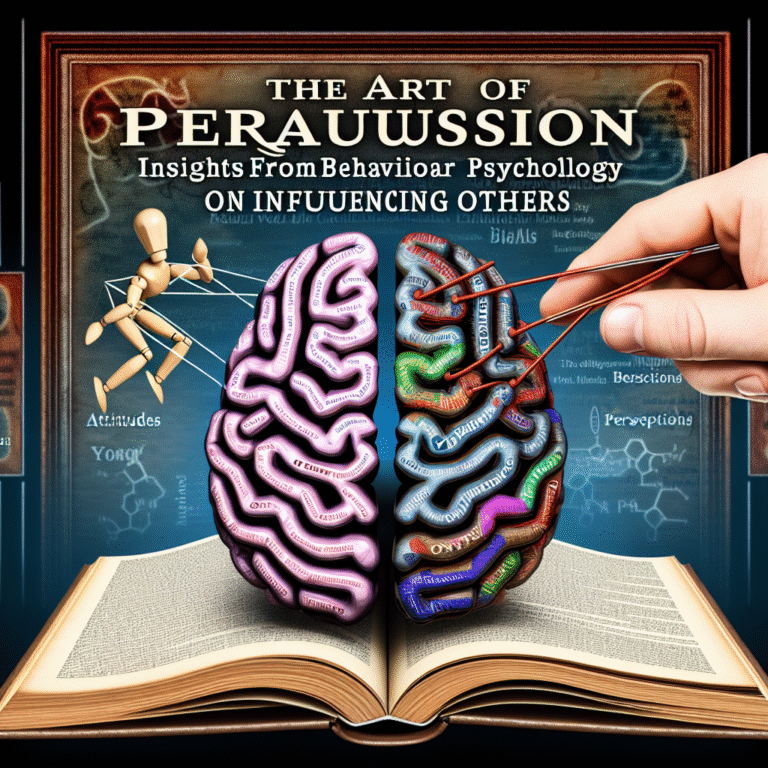
From Clinical Settings to Everyday Life: Remarkable Behavioral Psychology Case Studies
Introduction: The Power of Behavioral Transformation
Imagine witnessing a person overcome a lifetime of anxiety, an individual navigating the labyrinth of addiction, or a child blossoming with newfound confidence. The field of behavioral psychology is not just about therapy in clinical settings; it has profound implications for everyday life. This exploration, titled From Clinical Settings to Everyday Life: Remarkable Behavioral Psychology Case Studies, aims to illuminate how techniques honed in clinical environments dramatically reshape the narratives of real people. With the explosion of behavioral science and its practical repercussions, we have countless examples that inspire hope and ignite change.
By diving into several extraordinary case studies, we reveal the transformative strategies employed in clinics and their ripple effects in daily living. Understanding these cases offers not just knowledge but actionable insights that can empower individuals and communities alike.
The Behavioral Psychology Framework
Before delving into individual case studies, it’s essential to comprehend the basic principles of behavioral psychology. This branch of psychology focuses on how behaviors are learned and reinforced. Key concepts include:
- Conditioning: Classical and operant conditioning are essential in understanding how behaviors are acquired and modified.
- Reinforcement and Punishment: Positive or negative reinforcement encourages desired behaviors, while punishment aims to reduce unwanted behaviors.
- Cognitive-Behavioral Techniques: These approaches help individuals reshape their thoughts and feelings, leading to changes in behavior.
Each case study discussed in this article will showcase these principles in action, demonstrating their applicability beyond the clinic.
Case Study 1: The Power of Exposure Therapy
Background: Sarah, a 28-year-old woman, suffered from a debilitating fear of heights due to a traumatic childhood incident. This phobia restricted her professional growth and personal life.
Clinical Setting: Sarah underwent exposure therapy, a behavioral technique where patients gradually face their fears in a controlled setting. Her therapist started with virtual reality scenarios simulating heights and gradually progressed to real-life experiences, such as visiting an observation deck.
Everyday Application: Post-therapy, Sarah not only managed to ascend to new heights—literally—but also applied the principles of gradual exposure to other areas of her life, overcoming social anxieties and opening career opportunities.
Analysis: This case exemplifies From Clinical Settings to Everyday Life: Remarkable Behavioral Psychology Case Studies by showing how exposure therapy can be more than a treatment; it becomes a life lesson in facing fears.
Case Study 2: Behavioral Modification in Children
Background: Tommy, a 7-year-old diagnosed with ADHD, faced significant challenges in school and at home due to impulsivity and inattention.
Clinical Setting: Through a combination of behavioral modification techniques, including token economies (rewarding positive behaviors with tokens redeemable for prizes), Tommy learned to focus and control his impulses over time.
Everyday Application: Tommy’s success extended beyond school; at home, his parents implemented a similar reward system. As a result, his behavior improved, and family dynamics flourished.
Analysis: Tommy’s case illustrates how techniques from From Clinical Settings to Everyday Life: Remarkable Behavioral Psychology Case Studies can effectively alleviate issues by breaking down behavioral change into manageable steps.
Case Study 3: Overcoming Addiction Through Behavioral Contracts
Background: Mark, a 35-year-old recovering alcoholic, sought help after numerous failed attempts to quit drinking.
Clinical Setting: His therapist introduced a behavioral contract where Mark established clear goals, including sobriety milestones and consequences for slipping. They monitored progress through regular check-ins, reinforcing commitment.
Everyday Application: Mark took this contract home, appealing to friends and family to support him in maintaining accountability, making sobriety a community effort.
Analysis: This scenario serves as an inspiring example of From Clinical Settings to Everyday Life: Remarkable Behavioral Psychology Case Studies, demonstrating how structured behavioral agreements can bolster personal resolve.
Case Study 4: Cognitive Behavioral Therapy for Anxiety
Background: Lisa, a 24-year-old dealing with generalized anxiety, found her daily life suffocated by persistent worries.
Clinical Setting: Through cognitive behavioral therapy (CBT), she learned to identify and challenge her negative thought patterns, replacing them with constructive beliefs.
Everyday Application: Empowered with these techniques, Lisa began applying her newfound skills to mundane situations such as public speaking and social events, transforming her anxiety into confidence.
Analysis: Lisa’s journey from a clinical setting to everyday scenarios showcases the effectiveness of CBT, a key component within From Clinical Settings to Everyday Life: Remarkable Behavioral Psychology Case Studies.
Case Study 5: Utilizing Mindfulness and Behaviorally-Based Stress Reduction
Background: Jake, a 40-year-old corporate executive, grappled with workplace stress that affected his health and relationships.
Clinical Setting: He participated in an eight-week Mindfulness-Based Stress Reduction (MBSR) program, which combined mindful meditation with behavioral techniques to enhance emotional regulation.
Everyday Application: After completing the program, Jake integrated mindfulness practices into his daily routine, reporting reduced stress levels and improved productivity—benefits that permeated his personal life.
Analysis: Jake’s case underscores the importance of mindfulness as a behavioral tool, reinforcing the idea that insights from From Clinical Settings to Everyday Life: Remarkable Behavioral Psychology Case Studies can yield profound personal change.
Key Insights and Strategies
Value of Small Steps: Many successful behavioral changes originate from gradual exposure and manageable steps, making daunting challenges more approachable.
Community Support: Involving friends, family, and colleagues provides a support system that enhances personal accountability and fosters lasting change.
Self-Application of Techniques: Many therapeutic strategies, such as exposure therapy and behavioral contracts, can be adapted for personal use in everyday settings.
The Importance of Reinforcement: Positive and negative reinforcement plays a crucial role in shaping behaviors—understanding this can empower individuals to create conducive environments for change.
- Mindfulness as a Behavioral Tool: Incorporating mindfulness practices can significantly enhance emotional regulation and stress management across contexts.
Conclusion: Embracing Change Beyond the Clinic
The case studies explored in From Clinical Settings to Everyday Life: Remarkable Behavioral Psychology Case Studies reveal the inspiring potential of behavioral psychology. By translating clinical techniques to everyday applications, individuals can reclaim their lives, surmount challenges, and thrive in their personal and professional arenas.
Each case serves as a testament to the power of behavioral strategies, showcasing that the path to growth and transformation is indeed attainable.
Promoting these insights and strategies not only enriches individual experiences but also fosters a community aware of the tools available for personal advancement. Embrace the possibility of change, and remember: Every great journey begins with a single step.
FAQs
1. What is behavioral psychology?
Behavioral psychology is a branch of psychology that focuses on understanding and modifying behavior through conditioning and reinforcement techniques.
2. How can the principles of behavioral psychology be applied in everyday life?
Individuals can use techniques such as positive reinforcement, mindfulness, and exposure therapy to manage habits, cope with anxiety, or improve personal relationships.
3. Can behavioral strategies help with mental health issues?
Yes, behavioral strategies are often employed in therapeutic settings to treat anxiety, depression, ADHD, and substance use disorders, helping individuals develop coping mechanisms.
4. Are there behavioral techniques I can practice without professional help?
Absolutely! Techniques like journaling, setting achievable goals, and practicing mindfulness can be effectively integrated into your daily routine without professional assistance.
5. How long does it take to see results from behavioral therapy?
The timeline varies per individual, but many people begin noticing changes within a few weeks of consistent practice and application of behavioral techniques.
With these insights, we hope to inspire readers to explore behavioral psychology’s vast potential and utilize learned strategies in their lives, enriching everyday experiences through understanding and application.














